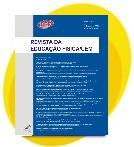Posture and balance in elderly practicers and non-practicers of physical exercises
Abstract
This study aimed at comparing body posture and balance between practicing and non-exercising elderly. This is a cross-sectional and analytical study, with a convenience sample of 245 elderly people, the group of physical exercise practitioners (GP) ) (n = 169) and non-physical exercise group (NGP) (n = 76). The balance was evaluated by the Berg scale and the orthostatic body posture through SAPO software and the posture seated by the Rocha e Souza protocol. It was found that the elderly of the GP had better seated posture (p = 0.046), vertical alignment of the right trunk (p = 0.039), vertical alignment of the right (p = 0.027) and left (p = 0.004), left ankle (p = 0.023), asymmetry of frontal plane (p = 0.008) and balance (p = 0.001), compared to the elderly of GNP. It is concluded that the elderly who practice physical exercises present better posture and balance, compared to non-practitioners. This information can be useful to increase and encourage programs of physical practices and physical activities for the elderly in Brazil.
Downloads
Copyright (c) 2020 Journal of Physical Education

This work is licensed under a Creative Commons Attribution-NonCommercial-NoDerivatives 4.0 International License.
• Authors retain the copyright and full publishing rights without restrictions.

This work is licensed under a Creative Commons Attribution 4.0 International License.













_1502.jpg)











